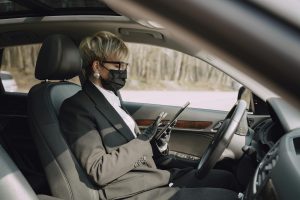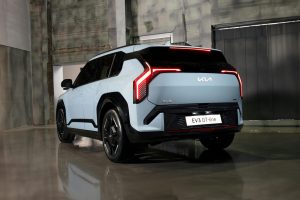Connected Cars: How IoT Is Transforming the Driving Experience
The rise of the Internet of Things (IoT) has brought about a significant shift in the way we interact with technology. From smart homes to wearables, the IoT has transformed various aspects of our daily lives. One of the latest industries to be disrupted by this technology is the automotive industry. With the introduction of connected cars, the driving experience is no longer just about getting from point A to point B. It has become a connected and customized experience, powered by the IoT. In this article, we will explore how IoT is transforming the driving experience and ushering in a new era of Smart Mobility. 
What are connected cars?
Connected cars are vehicles equipped with internet connectivity and wireless communication technology that enables them to communicate with other devices and systems. These cars use sensors, processors, and internet connectivity to gather and exchange data with their surroundings, creating a seamless and personalized driving experience for users.
The role of IoT in connected cars
The IoT is the backbone of connected cars. It enables these vehicles to collect and analyze data in real-time, enhancing vehicle performance, safety, and convenience. The IoT also enables cars to connect with other devices such as smartphones, wearables, and smart homes, creating a connected ecosystem that can be controlled remotely. In essence, the IoT creates a network for connected cars to communicate with other devices, making the driving experience smarter and more efficient.
How IoT is transforming the driving experience
1. Vehicle diagnostics and maintenance
One of the significant benefits of connected cars is their ability to monitor and analyze vehicle performance in real-time. The IoT sensors collect data on various aspects of the vehicle, such as engine performance, tire pressure, fuel consumption, and more. This data is then sent to the manufacturer, allowing them to identify issues and provide timely maintenance recommendations. This proactive approach not only ensures the safety of drivers but also reduces the likelihood of breakdowns and costly repairs.
2. Enhanced safety features
IoT technology has significantly improved the safety features of connected cars. With sensors and cameras installed, cars can detect and warn drivers of potential hazards, such as blind spots, lane departures, and collision risks. In case of an accident, connected cars can also automatically notify emergency services and share the car’s location, reducing response time and increasing the chances of survival for passengers.
3. Smart navigation and routing
Connected cars make navigation and routing more efficient and personalized. With the help of GPS, sensors, and real-time traffic data, these vehicles can suggest the best routes and avoid congested roads. In addition, connected cars can also sync with calendars and provide reminders and directions to scheduled appointments, making the driving experience more seamless and stress-free.
4. Voice-activated commands and controls
The integration of IoT technology and artificial intelligence has made it possible for connected cars to be controlled through voice commands. Drivers can make calls, play music, adjust temperature, and more without taking their hands off the wheel, allowing them to focus on the road and drive safely.
5. Predictive maintenance and software updates
IoT-enabled connected cars can also predict when maintenance or repairs will be needed based on driving patterns and vehicle data. This allows for timely and efficient maintenance, reducing vehicle downtime and costs. It also enables over-the-air software updates, ensuring that the car’s systems and features are up to date at all times.
The future of connected cars and Smart Mobility
The possibilities of connected cars and the IoT are endless. With advancements in technology, we can expect to see even more innovative features that enhance the driving experience. Some of the potential developments include self-driving cars, personalized entertainment systems, and smart charging for electric vehicles.
In conclusion, the IoT has revolutionized the automotive industry, paving the way for a more connected, efficient, and safer driving experience. Connected cars are transforming the way we interact with our vehicles, and with continuous development, we can expect to see even more exciting innovations in the near future. As the world moves towards smarter and greener solutions, the IoT and connected cars will play a significant role in shaping the future of Smart Mobility.









